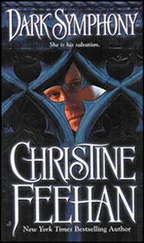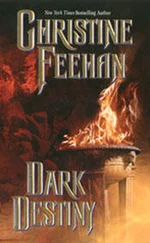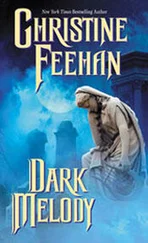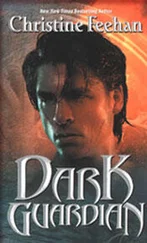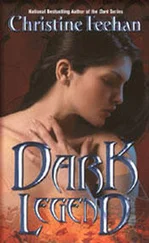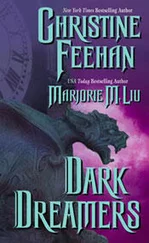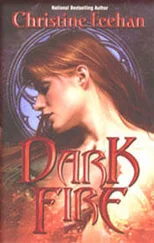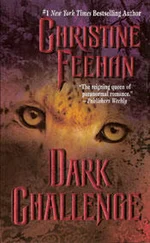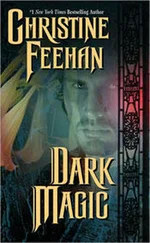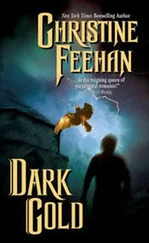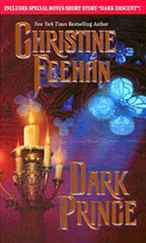Christine Feehan - Dark Celebration 17
Здесь есть возможность читать онлайн «Christine Feehan - Dark Celebration 17» весь текст электронной книги совершенно бесплатно (целиком полную версию без сокращений). В некоторых случаях можно слушать аудио, скачать через торрент в формате fb2 и присутствует краткое содержание. Жанр: Книги. Описание произведения, (предисловие) а так же отзывы посетителей доступны на портале библиотеки ЛибКат.
- Название:Dark Celebration 17
- Автор:
- Жанр:
- Год:неизвестен
- ISBN:нет данных
- Рейтинг книги:4 / 5. Голосов: 1
-
Избранное:Добавить в избранное
- Отзывы:
-
Ваша оценка:
- 80
- 1
- 2
- 3
- 4
- 5
Dark Celebration 17: краткое содержание, описание и аннотация
Предлагаем к чтению аннотацию, описание, краткое содержание или предисловие (зависит от того, что написал сам автор книги «Dark Celebration 17»). Если вы не нашли необходимую информацию о книге — напишите в комментариях, мы постараемся отыскать её.
Dark Celebration 17 — читать онлайн бесплатно полную книгу (весь текст) целиком
Ниже представлен текст книги, разбитый по страницам. Система сохранения места последней прочитанной страницы, позволяет с удобством читать онлайн бесплатно книгу «Dark Celebration 17», без необходимости каждый раз заново искать на чём Вы остановились. Поставьте закладку, и сможете в любой момент перейти на страницу, на которой закончили чтение.
Интервал:
Закладка:
3. Remove foil from frosting tub. Microwave frosting tub 15-25 seconds. Spread frosting over final layer of crackers.
4. Cover and refrigerate for four hours or overnight for best results. Enjoy!
Christmas Mice Submitted by: Susan Maluschka
Houston, TX
YIELDS 70 MICE
1 package chocolate almond bark 1 large jar cherries with stems, drained 1 bag Hershey's Kisses 1 small bag almond slivers
1. Put water in the bottom of a double boiler.
2. Spread out foil on the countertop next to stove.
3. Break chocolate almond bark into pieces and melt in double boiler.
4. Pat cherries dry on paper towels and unwrap the Kisses.
5. Hold cherries by the stems and dip in chocolate until cherry is covered. Lay cherry on its side on the foil (forms body and tail).
6. After dipping 4 or 5, prop up a Kiss with the flat part of the Kiss against the bottom of the cherry (forms head with pointed nose).
7. Then go back and place two almond slivers between Kiss and cherry (forms ears). If the chocolate has dried too much already, put a little chocolate from the double boiler on the almond slivers and hold them in place until they stay.
Appendix 1
Carpathian Healing Chants
To rightly understand Carpathian healing chants, background is required in several areas:
The Carpathian view on healing The «Lesser Healing Chant» of the Carpathians The «Great Healing Chant» of the Carpathians Carpathian chanting technique
1. The Carpathian view on healing
The Carpathians are a nomadic people whose geographical origins can be traced back to at least as far as the Southern Ural Mountains (near the steppes of modern day Kazakhstan), on the border between Europe and Asia. (For this reason, modern-day linguists call their language, «proto-Uralic,» without knowing that this is the language of the Carpathians.) Unlike most nomadic peoples, the wandering of the Carpathians was not due to the need to find new grazing lands as the seasons and climate shifted, or the search for better trade. Instead, the Carpathians' movements were driven by a great purpose: to find a land that would have the right earth, a soil with the kind of richness that would greatly enhance their rejuvenative powers.
Over the centuries, they migrated westward (some six thousand years ago), until they at last found their perfect homeland-their «susu»-in the Carpathian Mountains, whose long arc cradled the lush plains of the kingdom of Hungary. (The kingdom of Hungary flourished for over a millennium-making Hungarian the dominant language of the Carpathian Basin-until the kingdom's lands were split among several countries after World War I: Austria, Czechoslovakia, Romania, Yugoslavia, Austria, and modern Hungary.)
Other peoples from the Southern Urals (who shared the Carpathian language, but were not Carpathians) migrated in different directions. Some ended up in Finland, which accounts for why the modern Hungarian and Finnish languages are among the contemporary descendents of the ancient Carpathian language. Even though they are tied forever to their chosen Carpathian homeland, the wandering of the Carpathians continues, as they search the world for the answers that will enable them to bear and raise their offspring without difficulty.
Because of their geographical origins, the Carpathian views on healing share much with the larger Eurasian shamanistic tradition. Probably the closest modern representative of that tradition is based in Tuva (and is referred to as «Tuvinian Shamanism»)-see the map
above.
The Eurasian shamanistic tradition-from the Carpathians to the Siberian shamans– held that illness originated in the human soul, and only later manifested as various physical conditions. Therefore, shamanistic healing, while not neglecting the body, focused on the soul and its healing. The most profound illnesses were understood to be caused by «soul departure.'» where all or some part of the sick person's soul has wandered away from the body (into the nether realms), or has been captured or possessed by an evil spirit, or both.
The Carpathians belong to this greater Eurasian shamanistic tradition and shared its viewpoints. While the Carpathians themselves did not succumb to illness, Carpathian healers understood that the most profound wounds were also accompanied by a similar «soul departure.»
Upon reaching the diagnosis of «soul departure,» the healer-shaman is then be required to make a spiritual journey into the nether worlds, to recover the soul. The shaman may have to overcome tremendous challenges along the way, particularly: fighting the demon or vampire who has possessed his friend's soul.
«Soul departure» doesn't require a person to be unconscious (although that certainly can be the case as well). It was understood that a person could still appear to be conscious, even talk and interact with others, and yet be missing a part of their soul. The experienced healer or shaman would instantly see the problem nonetheless, in subtle signs that others might miss: the person's attention wandering every now and then, a lessening in their enthusiasm about life, chronic depression, a diminishment in the brightness of their «aura,» and the like.
2. The Lesser Healing Chant of the Carpathians
Kepa Sarna Pus (The «Lesser Healing Chant») is used for wounds that are merely physical in nature. The Carpathian healer leaves his body and enters the wounded Carpathian's body to heal great mortal wounds from the inside out using pure energy. He proclaims, «I offer freely, my life for your life,» as he gives his blood to the injured Carpathian. Because the Carpathians are of the earth and bound to the soil, they are healed by the soil of their homeland. Their saliva is also often used for its rejuvenative powers.
It is also very common for the Carpathian chants (both the lesser and the great one) to be accompanied by the use of healing herbs, aromas from Carpathian candles, and crystals. The crystals (when combined with the Carpathians' empathic, psychic connection to the entire universe) are used to gather positive energy from their surroundings which then is used to accelerate the healing. Caves are sometimes used as the setting for the healing.
The lesser healing chant was used by Vikirnoff Von Shrieder and Colby Jansen to heal
Rafael De La Cruz whose heart had been ripped out by a vampire in the book titled Dark Secret.
Kepa Sarna Pus (The Lesser Healing Chant)
The same chant is used for all physical wounds, «sivadaba»
note 1would be changed to refer to whatever part of the body is wounded.Kunasz, nelkul sivdobbanas, nelkul fesztelen loyly.
You lie as if asleep, without beat of heart, without airy breath.
note 2
Ot elidamet andam szabadon elidadert. I offer freely my life for your life. note 3
O jela sielam jorem ot ainamet es so?e ot elidadet.
My spirit of light forgets my body and enters your body.
note 4
O jela sielam pukta kinn minden szekmeket belso.
My spirit of light sends all the dark spirits within fleeing without.
note 5
Pajnak o susu hanyet es o nyelv nyalamet sivadaba.
I press the earth of our homeland and the spit of my tongue into your heart. note 6
Vii, o verim so?e o vend andam.
At last, I give you my blood for your blood.
note 7
To hear this chant, visit: http://www.christinefeehan.com/ members/.
3. The Great Healing Chant of the Carpathians
The most well-known-and most dramatic-of the Carpathian healing chants was En Sarna Pus («The Great Healing Chant»). This chant was reserved for recovering the wounded or unconscious Carpathian's soul.
Typically a group of men would form a circle around the sick Carpathian (to «encircle him with our care and compassion»), and begin the chant. The shaman or healer or leader is the prime actor in this healing ceremony. It is he who will actually make the spiritual journey into the nether world, aided by his clanspeople. Their purpose is to ecstatically dance, sing, drum, and chant, all the while visualizing (through the words of the chant) the journey itself-ever)' step of it, over and over again-to the point where the shaman, in trance, leaves his body, and makes that very journey. (Indeed, the word «ecstasy» is from the Latin ex statis, which literally means «out of the body.»)
Читать дальшеИнтервал:
Закладка:
Похожие книги на «Dark Celebration 17»
Представляем Вашему вниманию похожие книги на «Dark Celebration 17» списком для выбора. Мы отобрали схожую по названию и смыслу литературу в надежде предоставить читателям больше вариантов отыскать новые, интересные, ещё непрочитанные произведения.
Обсуждение, отзывы о книге «Dark Celebration 17» и просто собственные мнения читателей. Оставьте ваши комментарии, напишите, что Вы думаете о произведении, его смысле или главных героях. Укажите что конкретно понравилось, а что нет, и почему Вы так считаете.

